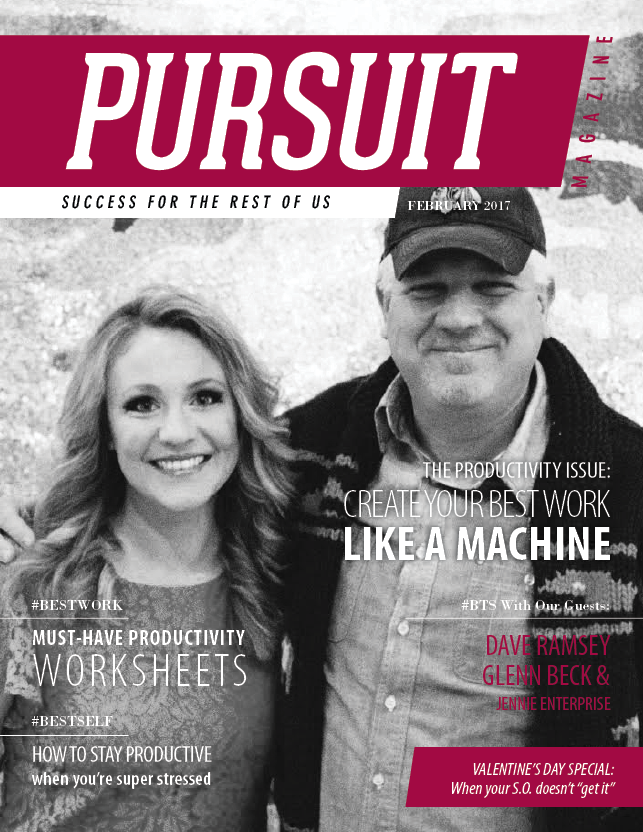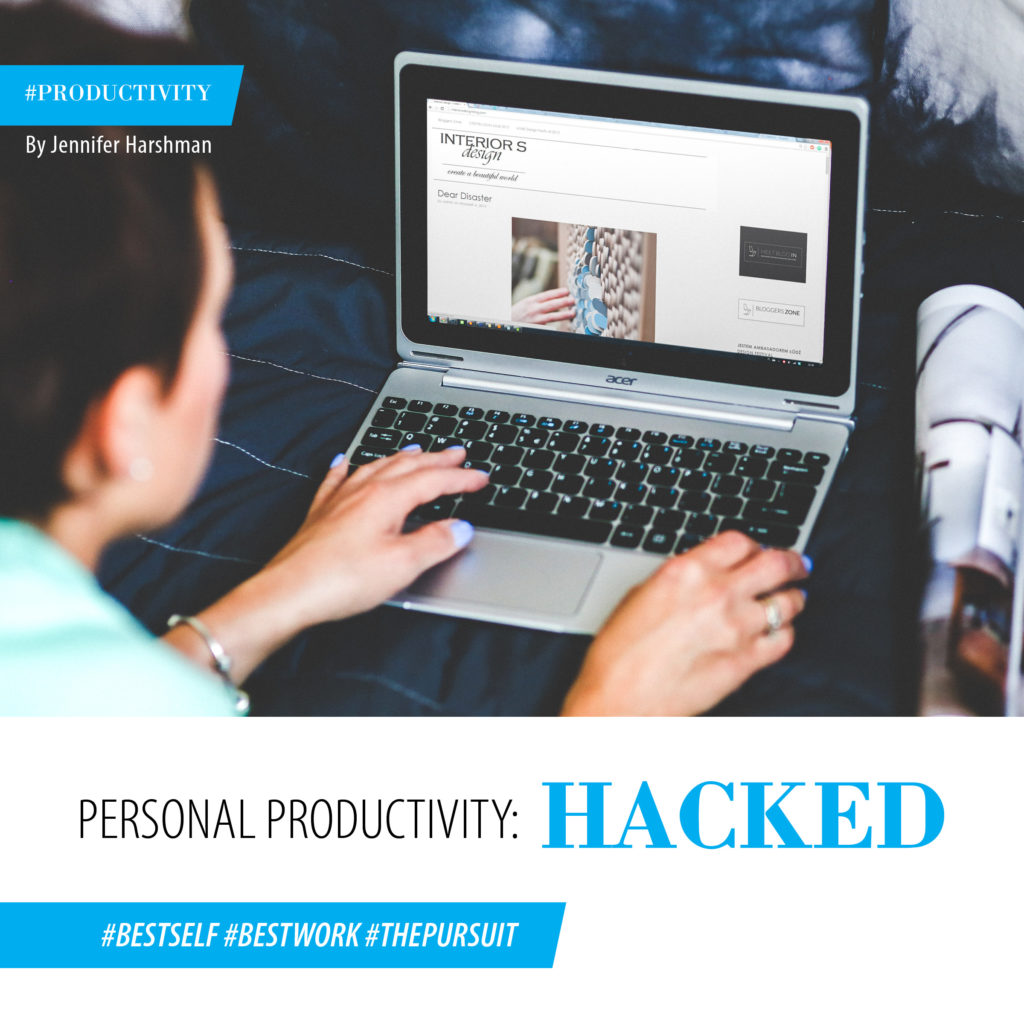Personal Productivity: Hacked
As a successful freelance editor for publishers and independent authors, a physically disabled home-schooling mother of three children who have some special needs, a cognitive trainer, and a member of my parish council, I’m often asked how I do it all: “How can you possibly be so productive?” Peter Shankman had me on his podcast, Faster Than Normal, to ask me just that.
For me, it comes down to four things: decisions, systems, knowledge and rules.
Perhaps you will find considering these four things helpful to you, too.
Decisions
We all know that we have to say no to some things. I make my decisions based on my values, priorities, and available time and energy. If saying yes to an activity means I would not be able to give my very best to the book I’m editing that week (which is very high on my list of personal values), then the answer is no, I cannot agree to participate in that activity. Sometimes, I have to cancel dates due to flare-ups with my medical conditions, but I always leave enough “cushion” on work projects so that I can still get my editing work done even if I do need to take the afternoon off to rest.
Systems
I manage the things that do make it onto my to-do list by using systems and tools. I use GQueues and Google Calendar, and my assistant Jannette has full access to both of them, along with my email. I batch cook, making a weeks’ worth of breakfasts in the time it takes to make one meal. (Then I don’t have to cook for most of the week, and I love that.) I use meal plans and do all the shopping in one monthly trip. I try to schedule out the full month ahead of time and to allow plenty of time for each thing.
All of this grew out of a long struggle. When presented with a task, I’d say, “Oh, that should take about an hour,” and I’d leave maybe an hour and a half of time for it, but it would take three hours, or five. Now, I say, “Oh, that should take about an hour, so I’m going to say it should take two hours and let’s double that just in case.” Then, I get there early, and I have a cushion on the back end also, so if it runs late, I’m not late to the next thing. I am compulsively early. I always carry a notebook and pens, and my phone is full of Kindle books, so time is never wasted. I even have a “what now?” list with tasks that I can do if I find myself with a minute or two on my hands, such as when I’m on hold when making a phone call. I don’t push myself every minute, though, and no one should. Sometimes, resting and deliberately doing nothing for a short time is good for the soul.
Out of my interest in using my time better, I found Rescue Time. It’s one of the fabulous tools available for tracking time usage. It tells me how much time I edited last week and how much time I watched life-hack videos on YouTube or vegged out with Netflix. It gives me a score and I try to keep it above a certain level, kind of like a competition with myself. Rescue Time comes in a free and premium version. I prefer the premium version because it lets me track my offline time as well. I have a set bedtime and a screen-cutoff time two hours before bedtime, which are part of systems but also part of knowledge.
Knowledge
There is so much information concerning the miraculous body/brain organisms we are. One area of increased consensus concerns the effects that different sources of light have on humans, which is why I use F.Lux to help lessen the effects of a screen’s light on me. You can download a free copy at www.JustGetFlux.com.
Here’s what my day looks like: I get up at 4 a.m. and move a bit and do the usual morning-routine things. Then I usually use caffeine and B vitamins for excellent focus. Some people like to use other neuroenhancing substances such as the combinations we hear referred to as “smart drugs” or “stacks,” but I’ll stick to my Red Bull.
From 4-8 a.m., I go full steam. Then I change gears and with my family do morning worship, breakfast, cleanup, and home school. We use systems for all of that, too. It’s all planned out: what and when and who and how—and we all know the why for everything. Working together means much can be accomplished in a short amount of time. We finish that part of our day with lunch and my husband’s departure for work. Then I nap or exercise to re-energize. For the next several hours, I use the Pomodoro Technique, which is working for 25 minutes followed by a five-minute break, and repeating that as often as necessary. Using that technique, I do “sprints” with a few friends on Facebook chat. We hold each other accountable—more systems and decisions.
Rules
Rules come into play everywhere that productivity is concerned. Parkinson’s Law, Pareto’s Principle, the Law of Diminishing Returns, David Allen’s Two-Minute rule, and the Just Start rule all help me be more productive. Each of these is explained on the next page.
Knowledge is the final piece—knowledge of available systems and tools and how to use them; knowledge of decision making and the rules/laws, and something a book isn’t likely to give you: knowledge of yourself.
I know how my system responds to different invitations, challenges, stressors, and substances, and I use that knowledge to my advantage anytime I can. I use essential oils, caffeine or energy drinks, vitamins and minerals, exercise, and breathing to help me be more productive. I know when to take breaks, revitalize, or call it a day. Some days that means I can work for 16 hours straight, and other days it means only four hours—though I still get more done in those four hours than some do in eight. That is partly because I love what I do and am a workhorse, but much of it comes down to those ways to increase productivity: decisions, systems, rules, and knowledge.
Takeaways:
- Make decisions. Hold each potential activity up to your values and priorities and then to your ability to do it (with the time and energy you have). Say no to anything that conflicts.
- Use systems. Use a calendar and a task-management tool like GQueues, WorkFlowy, or Asana, if you don’t already. Schedule efficiently and effectively.
- Follow rules. Get more done in less time. Be effective.
- Build knowledge. Know yourself and listen to your body. Learn what certain foods and chemicals do to you, and use that to your advantage. Know who helps you be more productive and who hinders you.
- Get started. Start with just one task. Set a timer for a very short amount of time, such as two minutes. Work as hard and as fast as you can until the timer sounds. Then take a look at your work. You might be surprised at how much you did—and how high the quality of that work is. Sometimes faster is better. Find what works for you by trying things and listening to your body, and you will be more productive.
The Rules
Parkinson’s Law
Work expands to fill the amount of time allotted for it. Think of work projects that you know could have been done in a day, but a week was allotted for it, and for some strange reason, it took the whole week to get it done. Baffling, right? That’s Parkinson’s Law. So, to use it, only set aside short amounts of time for things. See how quickly you can get things done, and still maintain your excellent quality standards.
Pareto’s Principle
Italian mathematician Vilfredo Pareto discovered that 80% of the wealth is held by only 20% of the people. Eighty percent (or more) of the results will come from 20% (or less) of the causes. This is called the 80/20 Rule. The percentages do change; sometimes it’s 90/10, or even 95/5. Think of a group project or event. A handful of people did all the work, didn’t they? That’s the way it is in any group, with any project. Knowing the Pareto Principle or the 80/20 Rule helps to keep us from getting angry or resentful when we’re the ones doing all the work. It’s a mathematical principle.
Law of Diminishing Returns
When exerting oneself, eventually the benefit gained will be less than the cost to obtain it. For example, I can proofread 20 pages an hour for a few hours, but not for six hours in a row. The rate of return (results) drops. After several hours, I’d become less efficient or less effective. I’d either be proofreading only a few pages per hour, or I’d be overlooking errors, neither of which is acceptable. So, we have to have breaks from a task, and we have to rest or switch to another task, and sometimes we have to stop for the day and begin again tomorrow.
David Allen’s Two-Minute Rule
If something will take you less than two minutes’ time to do, don’t put it on your to-do list; just do it right now.
Just Get Started
I’m not sure of the source of this rule. The premise is that getting started is the hardest part, and if you just get started—just do it for two minutes—you’ll be amazed at how much you get accomplished in that time and you might not want to stop when the timer sounds. Entire closets have been reorganized in this house using this rule, and all of the holiday decorations have been put up or taken down using it, too. My family knows that when I say, “Let’s just get started on it and see how it goes” that I really mean what I say but that we’ll most likely end up finishing it, too.
Put these rules to use and see what kind of boost your productivity gets.
 This article originally appeared in the February Issue of our monthly magazine alongside articles from other great guest contributors and Kelsey, such as Productivity Success for the Rest of Us with exercises, apps and worksheets, plus behind the scenes details from each February episode. To get the magazine subscribe here, issues are FREE but they expire each month so sign up today and download as soon they’re available or you’ll miss out! Subscribe
This article originally appeared in the February Issue of our monthly magazine alongside articles from other great guest contributors and Kelsey, such as Productivity Success for the Rest of Us with exercises, apps and worksheets, plus behind the scenes details from each February episode. To get the magazine subscribe here, issues are FREE but they expire each month so sign up today and download as soon they’re available or you’ll miss out! Subscribe
 Jennifer Harshman is a work-at-home-mom who home schools her three children, all of whom have some special needs. She’s a full-time freelance editor who serves several publishers, including Ancient Faith Publishing and Free Agent Press, and numerous independent authors such as Nick Pavlidis and Matthew Paulson. She’s also a licensed cognitive trainer and is fascinated with the human brain. When she’s not editing or home schooling, she’s reading (over 16,700 books so far and on track to add 180 books this year), sewing, crocheting, batch cooking, and dreaming of having a dog again. You can connect with Jennifer on Facebook or via her website HarshmanServices.
Jennifer Harshman is a work-at-home-mom who home schools her three children, all of whom have some special needs. She’s a full-time freelance editor who serves several publishers, including Ancient Faith Publishing and Free Agent Press, and numerous independent authors such as Nick Pavlidis and Matthew Paulson. She’s also a licensed cognitive trainer and is fascinated with the human brain. When she’s not editing or home schooling, she’s reading (over 16,700 books so far and on track to add 180 books this year), sewing, crocheting, batch cooking, and dreaming of having a dog again. You can connect with Jennifer on Facebook or via her website HarshmanServices.

